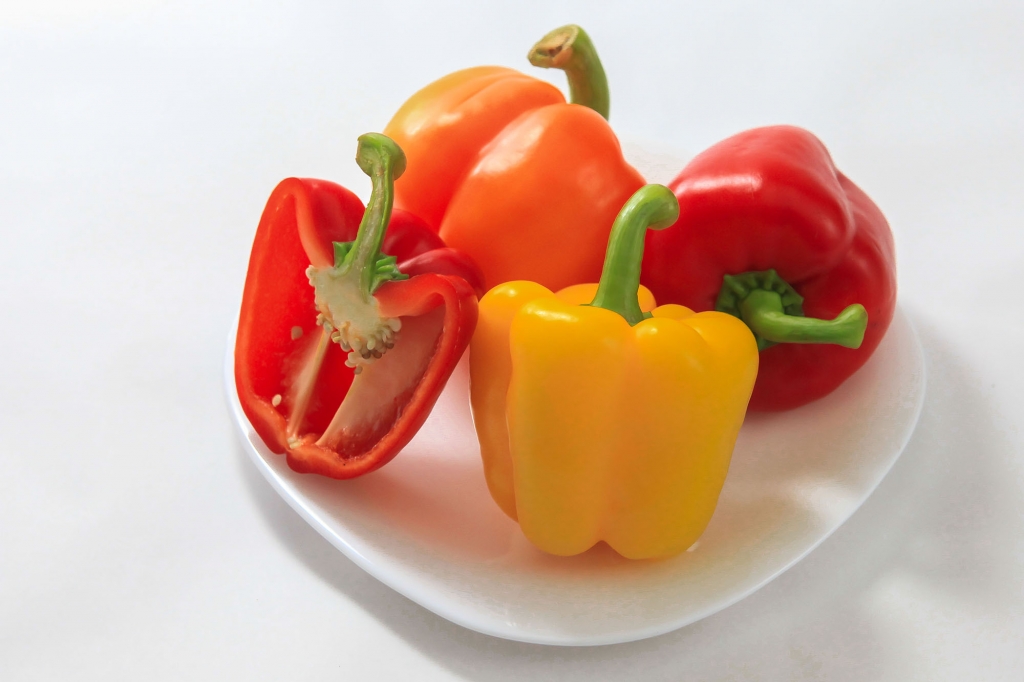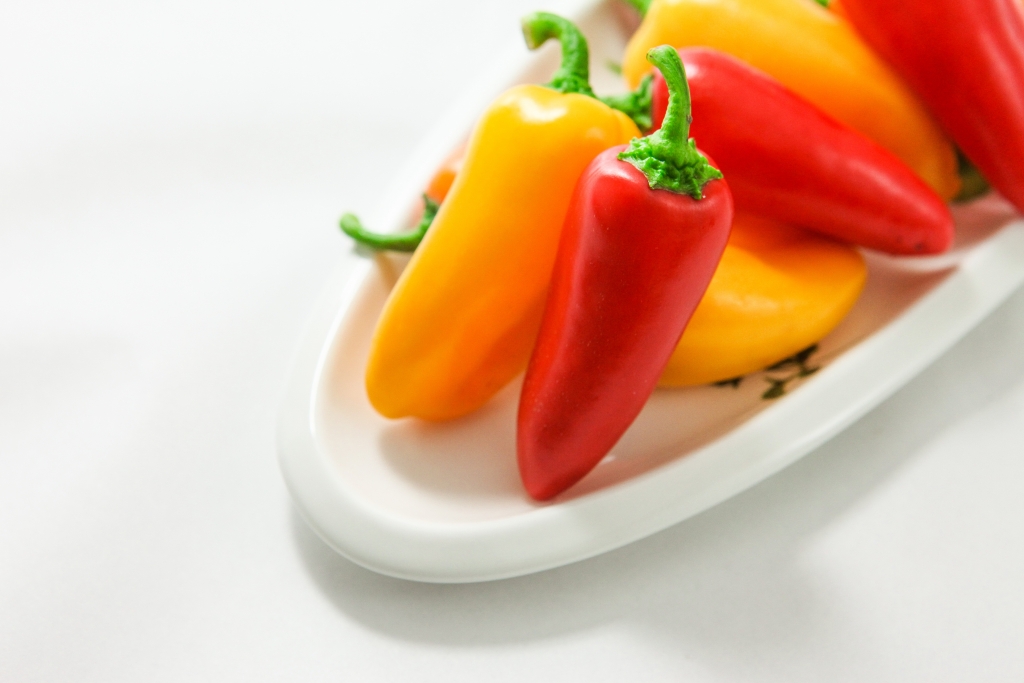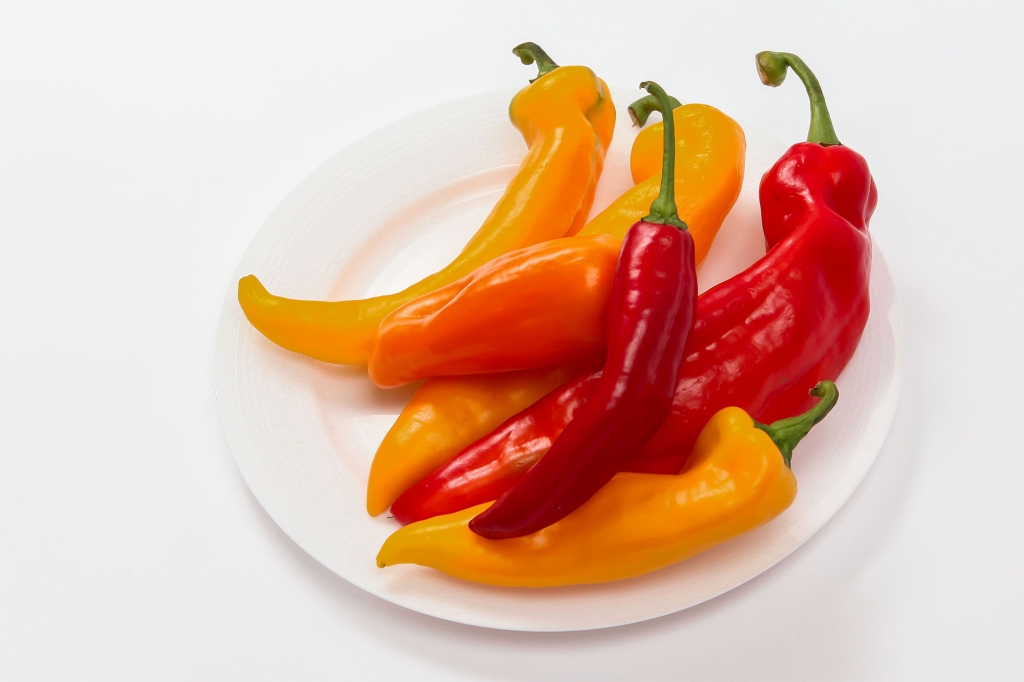Paprika
Paprika is a kind of chili and bell pepper and belongs to the genus of pepper, the family of solanaceae and originated from Latin America.
Red paprika contains red phytochemical capsanthin, which is strong for antioxidant activity like pepper and is good for immunity enhancement and prevention of lifestyle diseases such as cancer. In addition, paprika is thick, soft and sweet, so it can be eaten raw and often used as salad. Eating it with food containing fat (meat dish) improves the absorption of capsanthin.
As synonymous with color food, it is a repository of vitamin which contains juice of ‘red, yellow and orange’. Vitamin C contained in one paprika is five times as much as a tomato’s, twice as much as a lemon’s, four times as much as an orange’s, and 41 times as much as an apple’s. It is also rich in vitamin A and it is known that it enhances immunity, prevents colds, and acts as antioxidant.

Its weight is 30 ~ 40g and the size is similar to the size of a thumb so you can eat it in one bite. It is only small in size and had more antioxidant effect than normal paprika. Its sugar content is also high and it can be eaten as salad or raw. Especially the cute shape and the sweetness is popular with children who do not like vegetables.

It is a new kind newly developed in Europe lot so long ago. It has higher vitamin C content than ordinary paprika. The sweet taste and crunch flavor coming out from the soft peel is the best thing.


